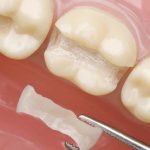Adhesive (Bonding) System
Bonding involves additions made to a tooth to change its color or shape, enlarge it, or correct a defect. Using materials known as microfill agents, imperfections in shape or color can be easily corrected by bonding them to the outer surface of the natural tooth.
Bonding is one of the most frequently used and most recent procedures in modern preventive dentistry. In most cases, it is performed with minimal loss of tooth structure. Often, the procedure can be done without even requiring anesthesia. When performed by a competent cosmetic dentist, the results appear natural.
This procedure, which can provide you with a beautiful and confident smile, often requires only a single session (15 minutes to 1 hour). The number of sessions depends on the extent of the work to be done. In general, it is more affordable compared to other aesthetic dental treatments.
This treatment method can be applied to nearly all age groups.
Children, teenagers, adults, and seniors can enhance their appearance and smile thanks to this method.
Color Changes in Teeth Treated with the Adhesive System
Microfill agents are developed using the most advanced techniques and share nearly the same characteristics as natural tooth structure. They change color only as much as natural teeth do. When surface roughness is minimized through proper polishing, resistance to staining increases. Possible discoloration caused by external factors (such as smoking, tea, cola, or coffee) can be removed during routine dental check-ups.
However, there are certain limitations regarding teeth treated with bonding. One should avoid biting very hard objects (such as ice or hard candy). Additionally, habits such as nail-biting should be avoided.
The longevity of the bonding depends on the quality of the material used and the skill of the dentist. Materials produced with the latest technology generally last between 5 and 10 years. A tooth previously treated with bonding can be treated again with a new bonding procedure when needed.


